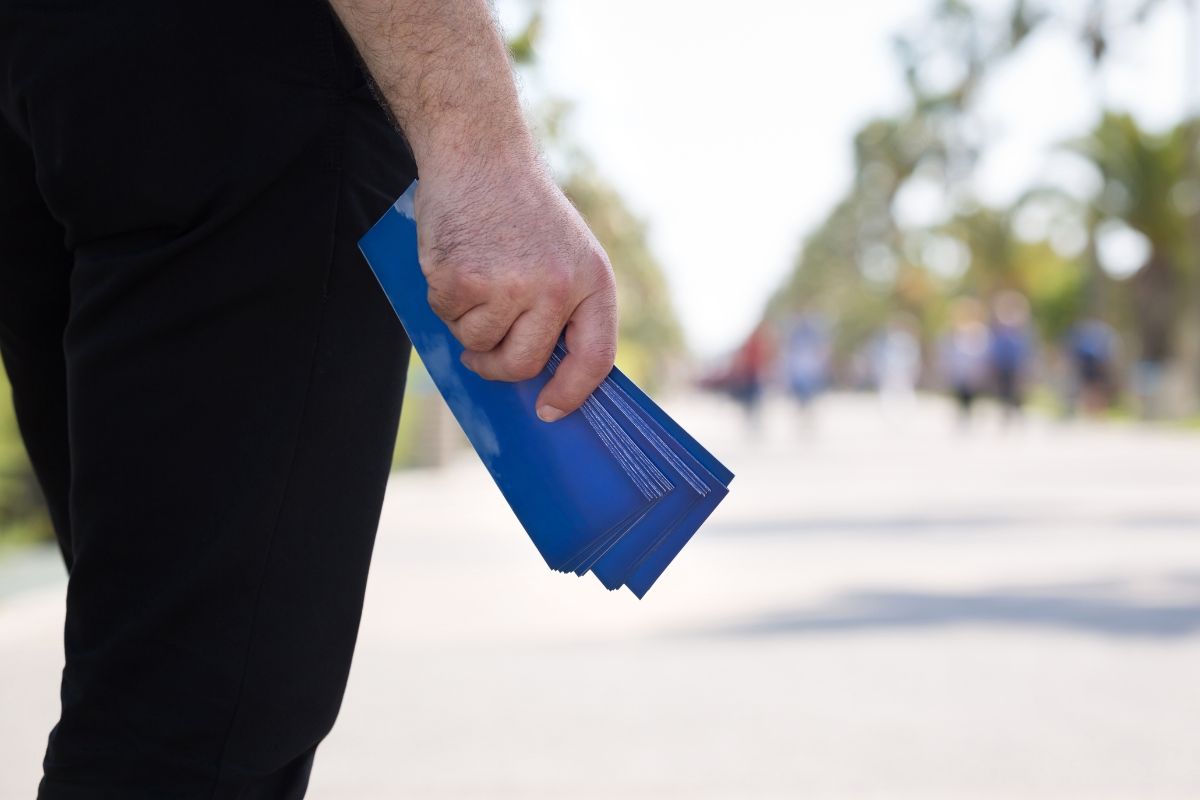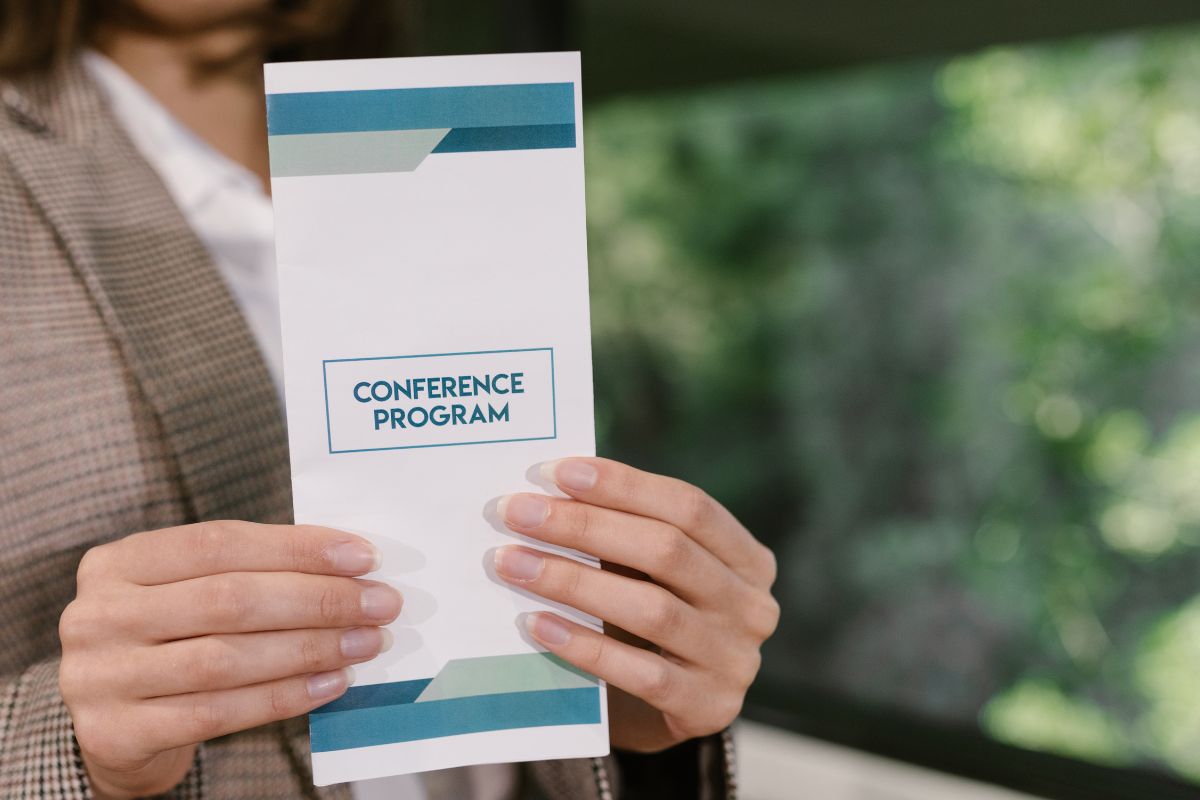Creating flyers for your business is a practical approach to getting your message across to your audience. With the right design and content, your flyers can attract attention, communicate key information, and encourage potential customers to take action. The process offers a blend of creativity and strategy, making it a valuable skill in your marketing repertoire.
To start making your business flyers, you’ll need to understand the essential elements that contribute to their effectiveness. These include compelling visuals, clear messaging, a strong call-to-action, and thoughtful distribution. Whether you choose to design from scratch or adapt from pre-existing templates, the goal remains the same: to create impactful flyers that resonate with your target market and get them interested in what you have to offer.
Fortunately, with a range of online tools and resources at your disposal, flyer making has become more accessible than ever. You can customize templates, play with colors, and select from various fonts to ensure your flyer stands out and aligns with your business identity. Leveraging these tools simplifies the design process, allowing you to produce professional-quality flyers even without a background in graphic design.
Understanding the Purpose of Flyers

Before creating your flyer, it’s crucial to grasp its purpose: to communicate valuable information to a specific audience and prompt them to take action.
Defining Your Target Audience
To ensure your flyer reaches the right eyes, identify who your ideal customers are. Are they students, homeowners, tech enthusiasts, or perhaps bargain shoppers? Narrowing down the demographics, preferences, and behaviors of your target audience will guide the design, content, and distribution of your flyer. For example, a flyer aimed at retirees for a community event would likely have large, clear text and images that resonate with their interests.
Setting Clear Objectives
A well-crafted flyer has clear goals. Are you looking to increase brand awareness, promote a sale, or inform about a new service? Each objective demands a specific call to action. A flyer promoting a grand opening may invite readers to visit your location on a specific date, while a flyer advertising a product could include an exclusive discount code to use online or in-store. Remember, your flyer should lead the reader to the next step in engaging with your business.
Designing Your Flyer
When you embark on designing a flyer, your focus should be on leveraging the right tools and design elements to create a layout that captures attention and communicates your brand effectively.
Choosing the Right Software
Selecting user-friendly software is crucial for your flyer design process. Choose applications like Canva for its drag-and-drop functionalities, which are accessible even to non-designers. For a more professional suite with extensive templates and graphics, Adobe Express offers an array of custom flyer options.
Flyer Design Elements
Key elements of a flyer include:
- Headline: Craft a compelling headline that captures the essence of your message.
- Body Copy: Concisely convey your information with clarity.
- Images/Graphics: Use high-quality visuals that align with your content.
- Call to Action (CTA): Clearly state what you want the recipient to do next.
Each component should work together to create a coherent and persuasive narrative.
Creating an Eye-Catching Layout
Your layout is the visual path that guides the reader through the flyer. Here’s how to structure it:
- Headline at the top – make it bold and noticeable.
- Graphic/Image – strategically place it to draw attention.
- Body Copy – use bullet points for readability.
- CTA – position it prominently to prompt action.
Properly segment these elements to avoid clutter and ensure a clean, organized look.
Incorporating Effective Branding
Brand consistency is non-negotiable. Your flyer must adhere to your brand’s color scheme, fonts, and style. Embed your logo and use your brand colors to create a professional look that is instantly recognizable. The goal here is to make sure your flyer is an extension of your brand identity.
Creating Compelling Content
Your flyer’s content is vital for turning casual observers into interested prospects. Each component must be crafted to grab attention, deliver a clear message, and incite action.
Writing a Persuasive Headline
A persuasive headline is the hook for your flyer. It should be bold, engaging, and sum up your offer concisely. For instance, “Unlock Massive Savings Today!” immediately communicates a benefit and urgency. Remember, you have just a few seconds to grab someone’s attention.
Including Essential Information
Your flyer must contain certain key details to be effective:
- What: Clearly state what you’re offering, whether it’s a service, product, or event.
- When: If there’s a time-sensitive aspect, include dates and times.
- Where: Location is crucial for events or physical stores.
- Why: Benefits or reasons why someone should be interested.
- How: Explain how to take the next step, like registering or visiting a website.
Structure these details in a way that’s easy to scan, using bullet points or short, descriptive sentences.
Using Calls to Action
Calls to action (CTAs) guide your audience on what to do next. Use imperative verbs and phrases like “Call Now,” “Visit Today,” or “Sign Up.” Place your CTA prominently on the flyer, perhaps with contrasting colors or a circle around it to stand out. Make it as simple as possible for your audience to respond.
Printing and Distribution

In the journey of making effective business flyers, printing and distribution are crucial stages. You’ll want to ensure that your materials reflect the quality of your brand and that they reach your intended audience efficiently.
Selecting Quality Materials
Paper Type:
- Glossy: Offers vibrant colors, great for image-heavy designs.
- Matte: Ideal for readability, perfect for text-rich flyers.
Weight:
- Standard (80-100 gsm): Cost-effective and suitable for mass distribution.
- Premium (170-300 gsm): Thicker and more durable for a high-end feel.
It’s important to choose the right material to convey your message. For example, VistaPrint offers different paper weights and finishes that can be matched to your flyer’s purpose.
Considering the Costs
Printing Costs:
- Bulk Printing: Generally, the more you print, the cheaper each flyer costs.
- Color vs. Black & White: Full-color printing is more expensive but more eye-catching.
Budgeting:
- Allocate funds for both printing and distribution to ensure your flyers don’t just get made but get seen.
Balancing quality with quantity is essential – don’t compromise your brand with subpar printing due to budget constraints.
Distribution Strategies

Hand Distribution:
- Personal, direct, and creates engagement. Ideal for local audiences.
Mail Distribution:
- Broad reach with the ability to target specific demographics or locations.
Strategic Placement:
- Partner with local businesses or community boards where your target audience frequents.
Effective distribution means getting your flyers into the hands of potential customers, not just distributing them widely. Companies like GotPrint provide options for mass printing with quality that suits various distribution strategies.
Leveraging Digital Platforms
To effectively use digital platforms for creating and distributing business flyers, you’ll need to harness the reach and functionality of social media, email marketing, and strategies to maximize your online visibility.
Publishing on Social Media
Platforms: Identify the platforms where your target audience is most active; Facebook, Instagram, LinkedIn, and Twitter are good starting points.
Content: Customize your flyer’s design and message for each platform to engage your audience effectively.
Email Marketing Techniques
List Segmentation: Segment your email list to tailor your flyer distribution to the most interested recipients.
Tracking: Use email marketing tools to track open rates and conversions, adjusting your strategy based on these metrics.
Maximizing Online Visibility
SEO: Integrate keywords related to your flyer’s content to improve its visibility on search engines.
Synergy: Cross-promote your flyer on multiple digital platforms to expand your reach and enhance your online presence.
Measuring Success

To ensure your flyer campaign delivers tangible business value, it’s crucial to measure its performance with clear metrics.
Gathering Feedback
Craft a section on the flyer that invites feedback. This could be a dedicated phone number, a survey link, or a unique email address. Use this to collect qualitative insights from your audience about your flyer’s design effectiveness and message clarity.
- Methods to Consider:
- QR code linking to a feedback form
- Customer service line mention with a prompt for opinions
- Email address specifically for comments
Analyzing Response Rates
Utilize tracking tools to measure how many people are acting upon your flyer. This involves analyzing conversion-related metrics, such as redeemed coupon codes, website traffic spikes, or increased calls or emails during the campaign period.
- Metrics to Track:
- Conversion Rate: The percentage of recipients who took the desired action.
- Engagement: Number of inquiries or mentions on social media.
- ROI: Comparing the campaign cost against the value of conversions.
Use the above approaches to effectively gauge the success of your business flyers and make data-driven decisions for future marketing strategies.
Frequently Asked Questions
When creating business flyers, your choice of tools and understanding of design principles can make a significant difference in the final product. Explore these common questions to help ensure your business flyers stand out and convey your message effectively.
What are the best apps for creating business flyers and posters?
Several apps have gained popularity for designing business flyers, among which Adobe Express offers a quick and user-friendly experience, and Canva provides diverse options with professional layouts for any business need.
Which platforms offer free templates for designing professional flyers?
Platforms such as Canva and Adobe Express offer a wide range of free templates that can be customized to fit your professional flyer design specifications.
How can one create a printable business flyer online at no cost?
You can create a printable flyer at no cost using online tools like Adobe Express which offers free versions that let you design and download printable business flyers.
What steps can be taken to ensure flyers designed for a business look professional?
Employing a consistent and readable font, using high-quality images, aligning elements cleanly, and keeping the design simple are pivotal steps to ensure your flyers look professional and appealing.
What key elements should be included in a flyer to effectively promote a small business?
Your flyer should include your business logo, clear and concise messaging, a call-to-action, contact information, and if applicable, an incentive such as a coupon or discount to attract customers.
Can you recommend any examples of impactful business flyers for reference?
For inspiration on creating impactful flyers, you can look at examples from print companies like GotPrint which showcase a variety of successful business flyer designs.



